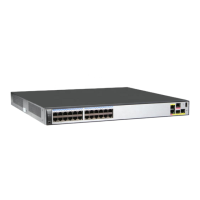9.4 Managing Patches
This section describes several operations that can be performed on patches. You can install
patches to upgrade the system without interrupting services, specify the patch file to be used
after the next startup, uninstall patches to deactivate the patches that do not meet system
requirements, or delete the unwanted patches to release the memory of the patch area on the
MPU.
9.4.1 Establishing the Configuration Task
To rectify system vulnerabilities or defects, you can install patches in the system. Installing
patches allows the system to be upgraded without interrupting services.
Applicable Environment
During patch installation, the patch is installed onto the MPU and all LPUs.
You can use either of the following methods to install patches:
l Installing a patch file immediately: The patch file takes effect after a command is used to
run the patch file, without having to restart the device. For details, see Installing a
Patch.
l Specifying a patch file to be used at the next startup: The patch file takes effect after the
device is restarted.
Pre-configuration Tasks
Before managing patches, complete the following tasks:
l Making sure that the router is working properly
l Storing patches in the storage medium on the router
Data Preparation
To manage patches, you need the following data.
No.
Data
1 Patch file
9.4.2 Installing a Patch
You can load and run a patch in the user view. This allows the device performance to be
optimized.
Context
Only one patch file can be run in the system at a time. Therefore, display patch-information
run the command before patch installation to check information about all patches, including the
Huawei AR2200 Series Enterprise Routers
Configuration Guide - Basic Configuration 9 Upgrade and Maintenance
Issue 02 (2011-10-15) Huawei Proprietary and Confidential
Copyright © Huawei Technologies Co., Ltd.
188

